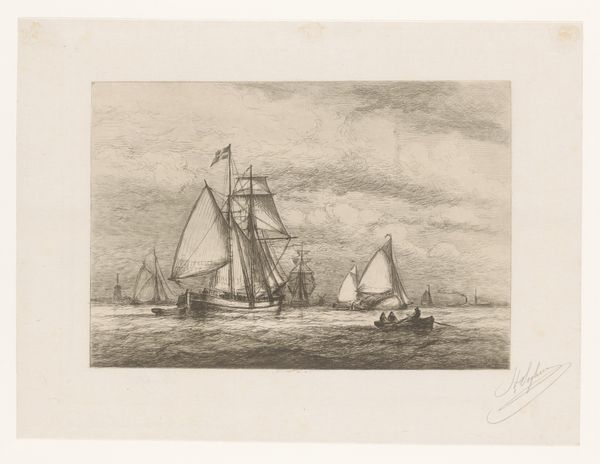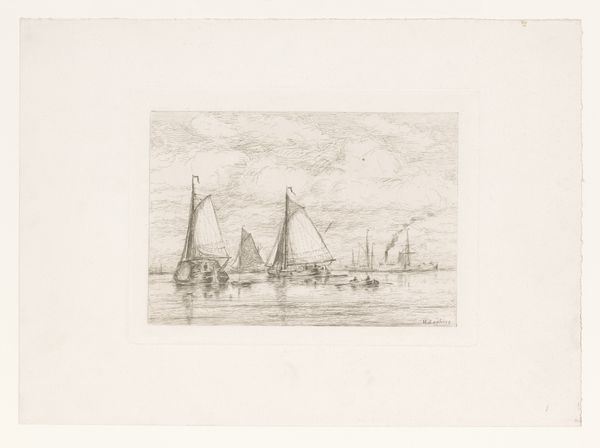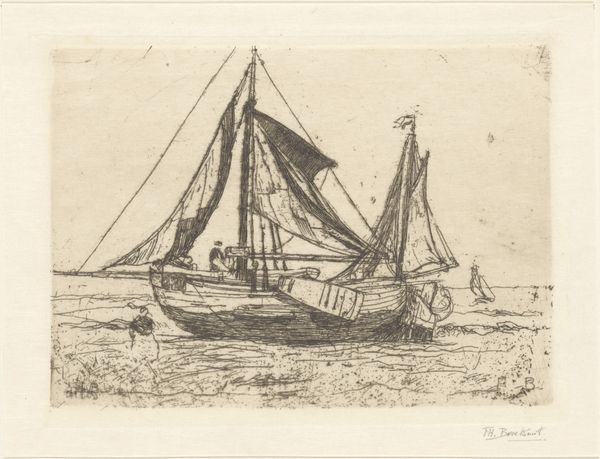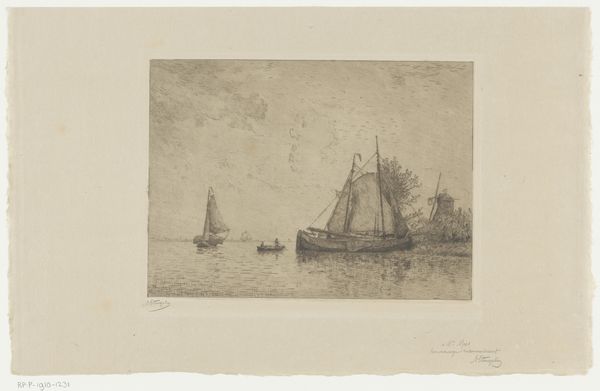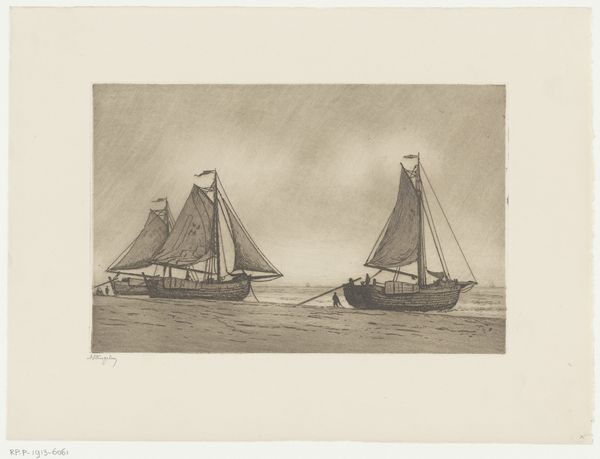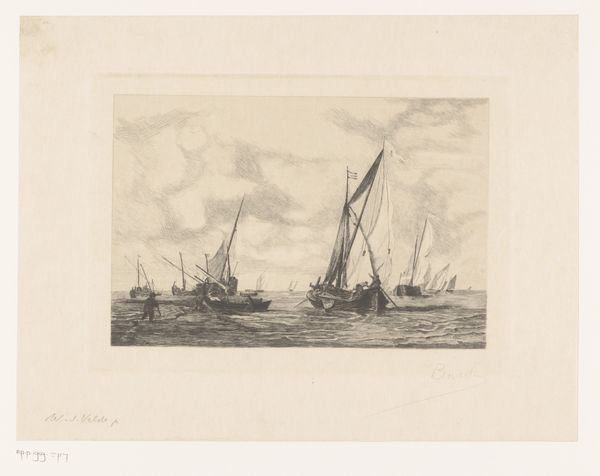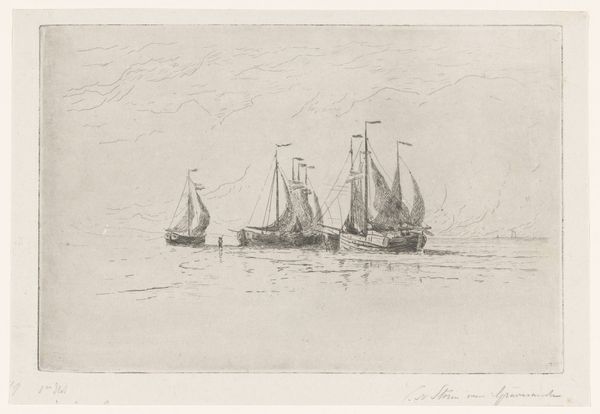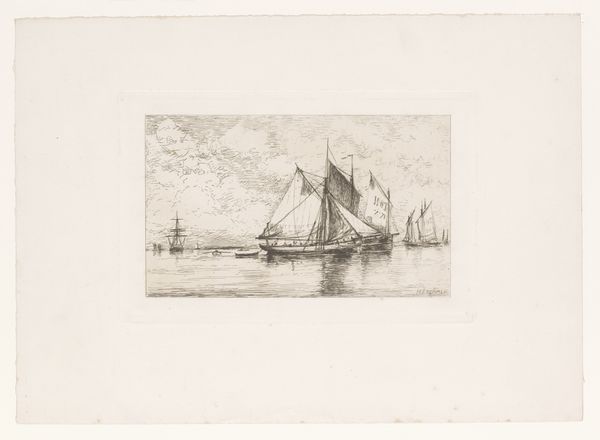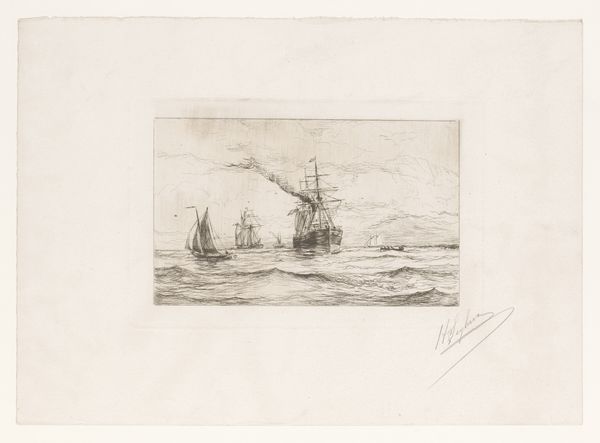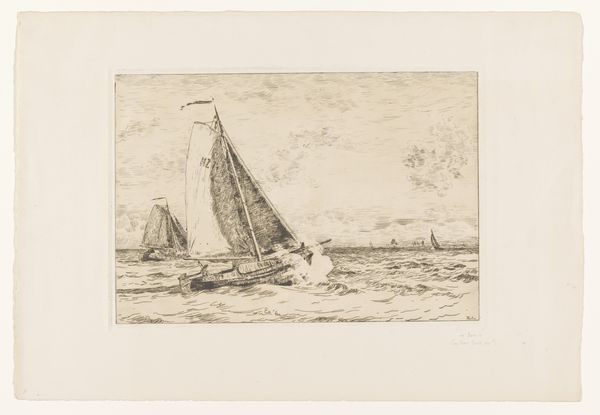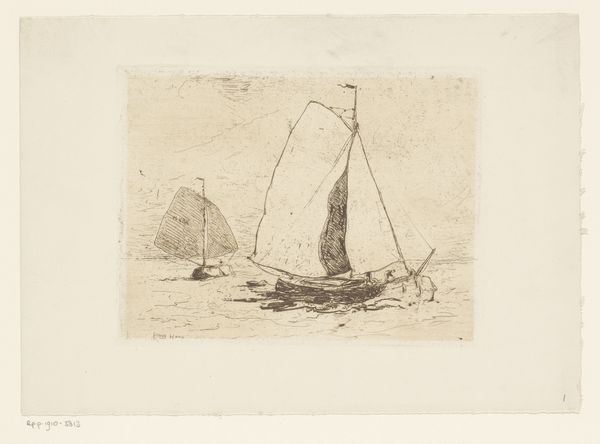
drawing, print, etching, ink
#
drawing
# print
#
etching
#
landscape
#
etching
#
ink
#
line
#
realism
Dimensions: height 235 mm, width 319 mm
Copyright: Rijks Museum: Open Domain
Curator: Welcome. Today, we’re looking at “Zeilschepen en een roeiboot op open water” by Henri Seghers, dating from 1886. The work is an etching printed with ink on paper. Editor: My immediate reaction is a feeling of quiet vastness. The etching is deceptively simple, but the sky feels heavy, pregnant with weather. And that tiny rowboat puts the scale of everything into perspective. Curator: Indeed. Seghers’ choice of etching, a printmaking process involving acid-etched lines on a metal plate, is particularly fitting. Think about the social conditions; consider the labor involved. The deliberate mark-making emphasizes the careful control needed for such detail in representing maritime labor and leisure, and its availability as print making technology allowed a certain amount of reproductions and dissemination in comparison to painting, shifting artistic value towards print for its own sake. Editor: Agreed, the linearity dictates our interpretation of maritime realism in the late 19th century. It’s incredible how the density of the lines creates such atmospheric perspective, wouldn’t you agree? Observe how his meticulous cross-hatching defines the clouds and their reflection in the water to evoke that palpable atmosphere. It’s masterfully done, I must say, which suggests, I argue, more artistic value put in that particular set of skills and application to craft something we read as almost documentary. Curator: I concur. Also worth noting the context, though. Prints such as these also became affordable décor for an emerging middle class in cities, contributing to the market value of seascapes during the late nineteenth century and normalizing that image into commodity as urban population became consumers. Editor: Interesting perspective; but does it compromise its artistic credibility? To think, mass consumption has fueled new technology advancements in art making! Now I see this scene almost allegorically with that contrast in vessels as well: a large merchant ship representing trade, and the humble rowboat alluding to more simple maritime pleasure... The balance within that tension gives it a quiet dignity. Curator: A dignity borne of a burgeoning industrial complex! So perhaps both modes of transit benefit the other. What an irony—a print memorializing the dichotomy of labor and leisure. Editor: An irony, well, that we both just successfully unfolded! Curator: Indeed. Thank you for this conversation, this close analysis offers us valuable insights into a historical perspective.
Comments
No comments
Be the first to comment and join the conversation on the ultimate creative platform.
